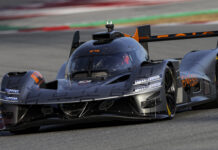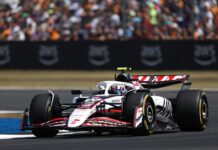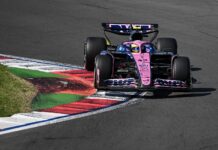The FIA has releases details of new technical directive with regards to porpoising and that there will be short and long term solution plus adds on roll hoop too.
The latest directive from the FIA has reaffirmed the discussions around the porpoising situation amid the ongoing 2022 F1 season. The last directive proposed certain changes for a short-term fix on the grounds of safety and health of the drivers.
The short-term measures announced a while a back will happen from the Spa weekend, allowing teams to adjust to the changes. But the FIA has now revealed changes for 2023 mostly aimed at the floor which will significantly reduce porpoising.
These measures will now be presented to the World Motor Sport Council. In addition to the porpoising matter, the discussions also took place with regards to roll hoops and how to make it more safe after the incident involving Guanyu at Silverstone.
Here’s the full FIA communication:
“As communicated after the most recent F1 Commission meeting, the issue of vertical oscillation of the cars (also referred to as porpoising) was discussed. The FIA reaffirmed its strong commitment to reduce and hopefully eliminate the issue in the near term, as it is considered to be a significant safety matter. It is the responsibility and the prerogative of the FIA to intervene for safety matters, and the reason the regulations allow such measures to be taken is precisely to allow decisions to be taken without being influenced by the competitive position each team may find themselves in.
The following factors were noted:
- While the issue has been seemingly reduced in the last few races, they took place at circuits where the effect is expected to be lower than normal. Races where this effect is expected again to be higher will take place in the coming months.
- While the teams are understanding more and more how to control the issue, the tendency for 2023, with the cars developing more downforce, will most likely be a worsening of the effect.
- The short-term measures put in place for 2022, starting at Spa, are not considered necessarily to be the long-term solution to the problem. For 2022, the FIA reaffirmed, starting from Spa, the following measures: 1) A stiffening of the plank skids, and a clarification on how their wear will be measured; 2) The introduction of a metric, which will quantify the bouncing, which will have to stay below a prescribed value during the races. The F1 Teams will be able to use the metric already from the forthcoming race in France, in order to learn its full implications on their cars’ setup. In the spirit of consultation, the FIA discussed a range of aerodynamic measures with the teams and, taking into account the views of the teams, the FIA has decided to narrow down the actions it intends to take for 2023 to these steps: 1) A 25mm raising of the floor edges; 2) A raising of the underfloor diffuser throat; 3) The introduction of more stringent lateral floor deflection tests; 4) The introduction of a more accurate sensor to help quantify the aerodynamic oscillation.
These measures will be submitted to the World Motor Sport Council for consideration and approval shortly as it is vital for the Formula 1 teams to have clarity of the regulations to which to design their cars. The TAC also discussed the serious incident involving Zhou Guanyu at Silverstone. The teams confirmed their availability to introduce more stringent measures on the roll hoops for 2023, and the FIA undertook to complete the relevant analyses, and to communicate to the teams new requirements for the safety of the roll hoop. The FIA welcomed the constructive approach of the teams during these discussions.



















